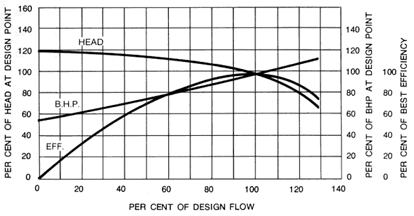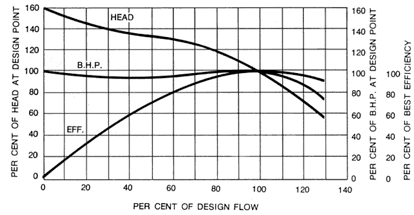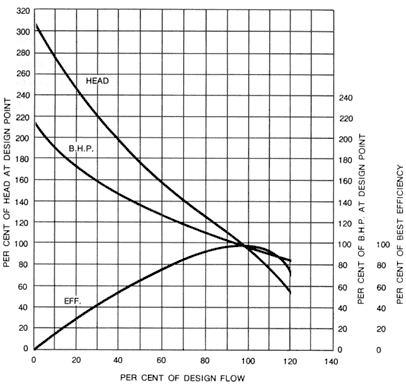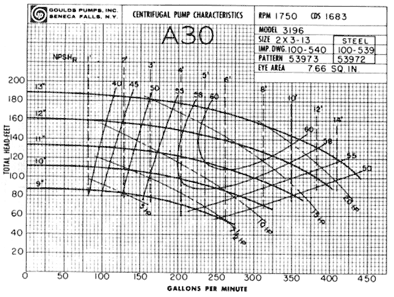Figures 5, 6, & 7 are non-dimensional curves which indicate the general shape of the characteristic curves for the various types of pumps. They show the head, brake horsepower, and efficiency plotted as a percent of their values at the design or best efficiency point of the pump.
Fig. 5 below shows that the head curve for a radial flow pump is relatively flat and that the head decreases gradually as the flow increases. Note that the brake horsepower increases gradually over the flow range with the maximum normally at the point of maximum flow.

Fig. 5 Radial Flow Pump

Fig. 6 Mixed Flow Pump

Fig. 7 Axial Flow Pump
Fig. 8 below shows a typical pump curve as furnished by a manufacturer. It is a composite curve which tells at a glance what the pump will do at a given speed with various impeller diameters from maximum to minimum. Constant horsepower, efficiency, and NPSHR lines are superimposed over the various head curves. It is made up from individual test curves at various diameters.

Fig. 8 Composite Performance Curve


